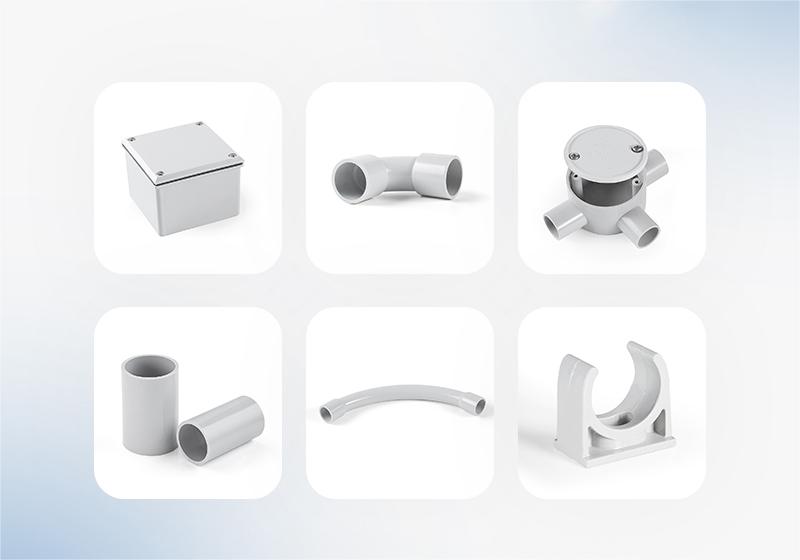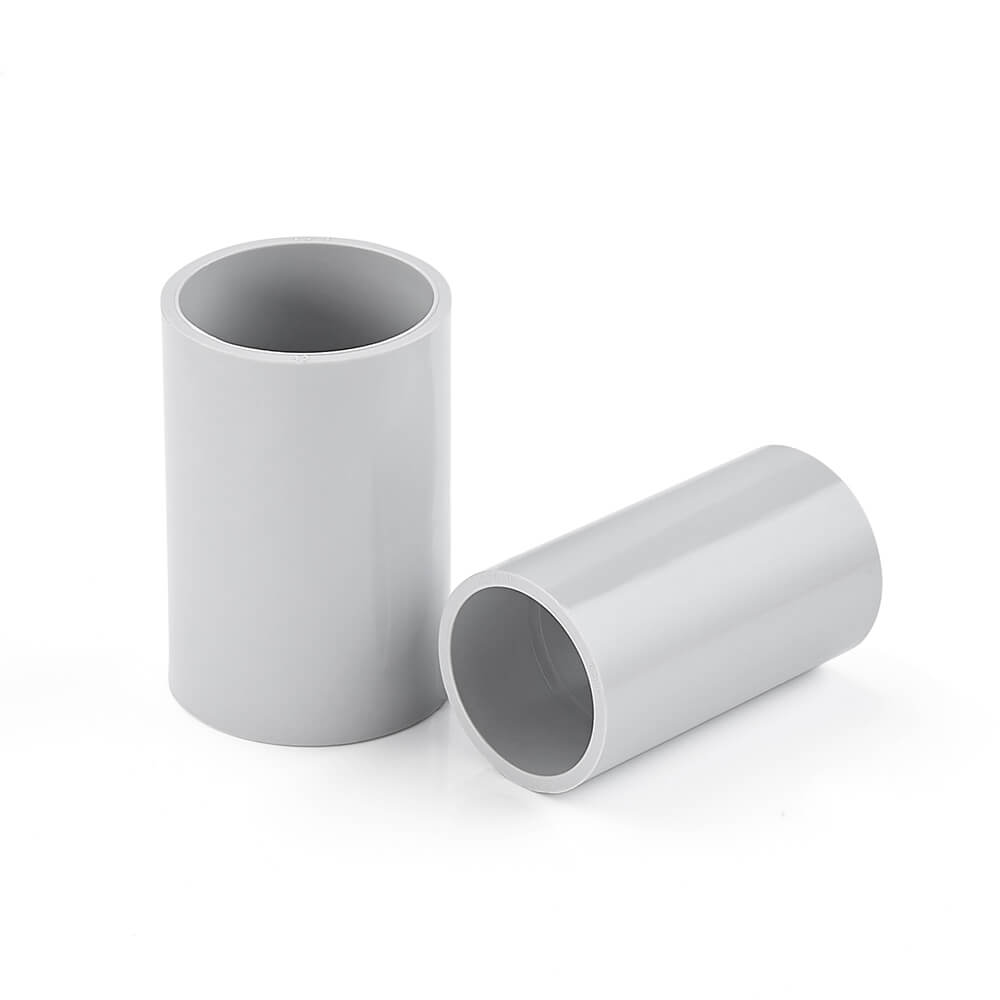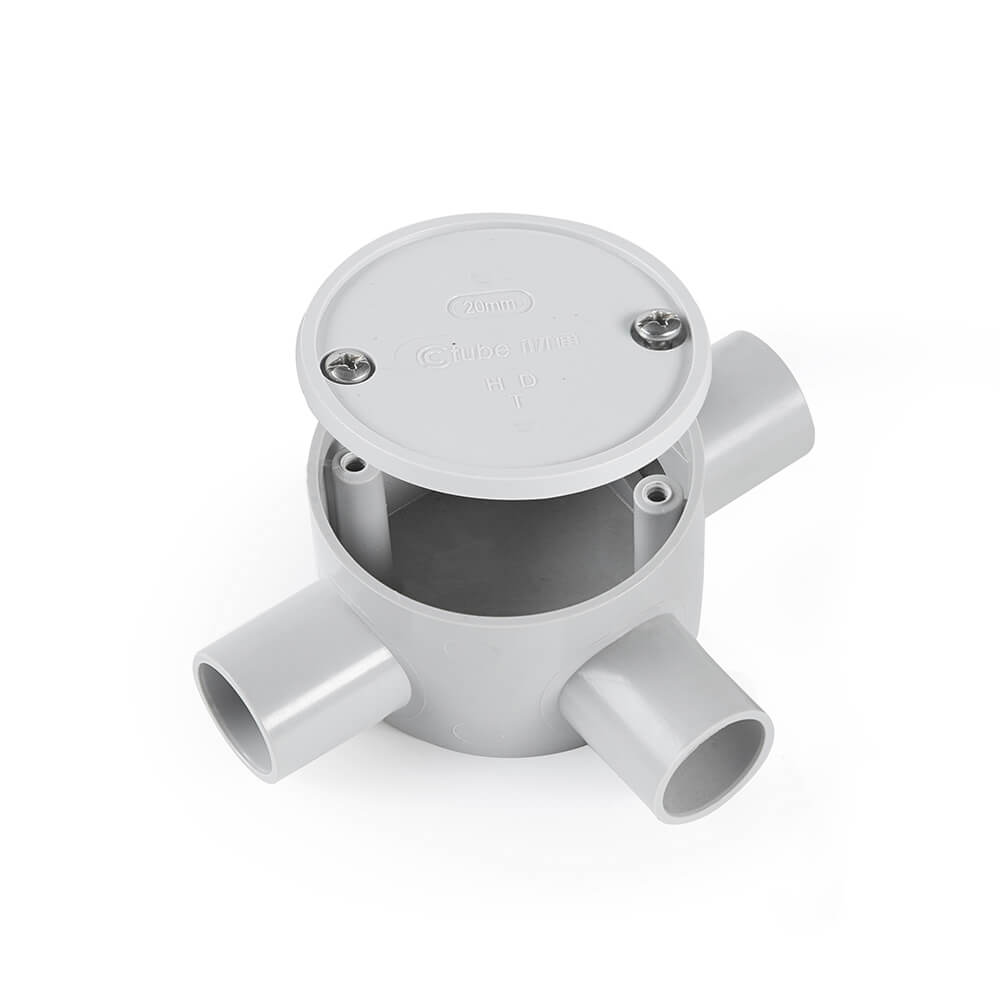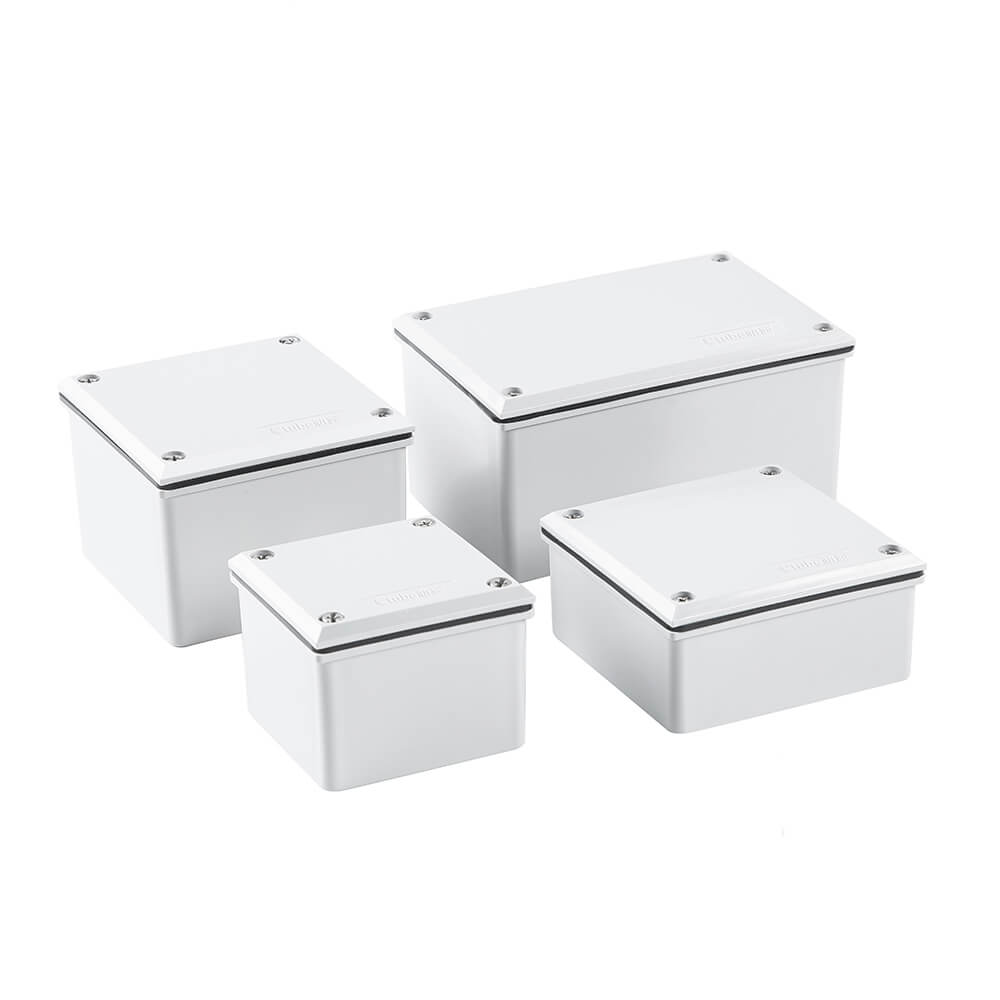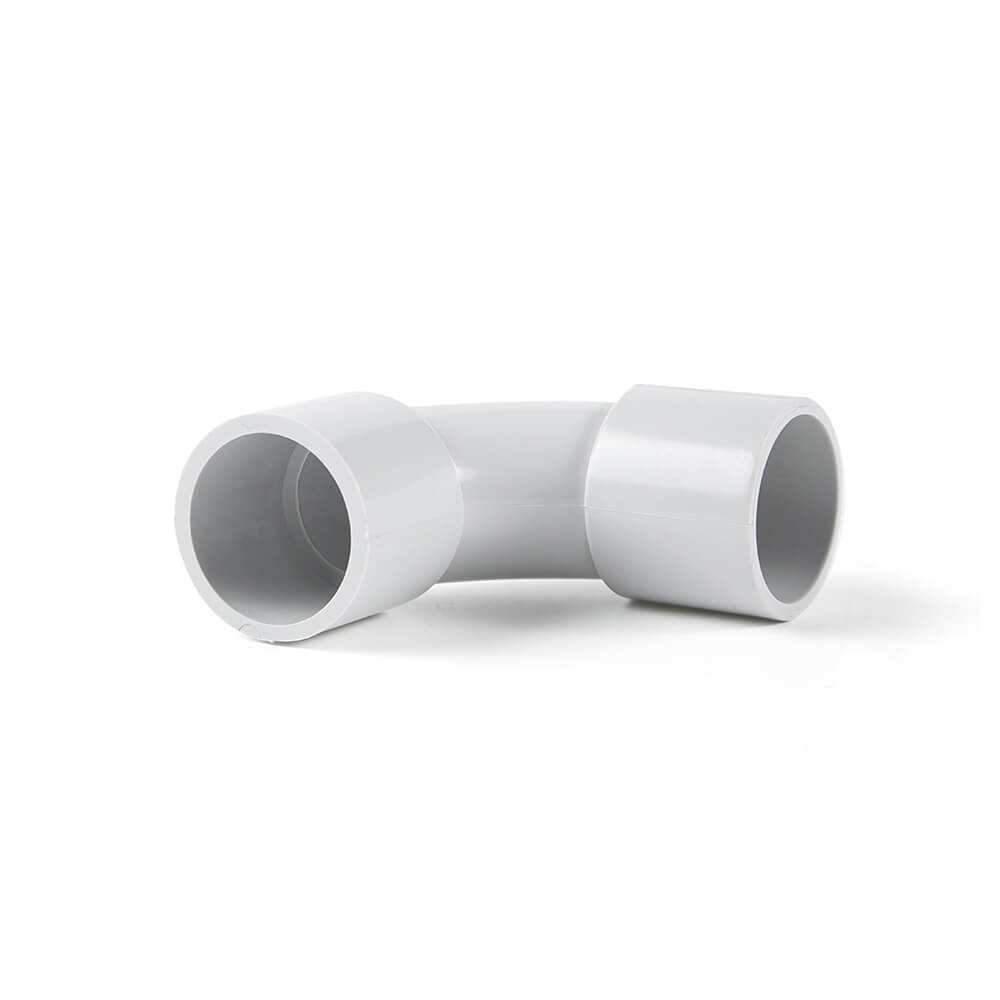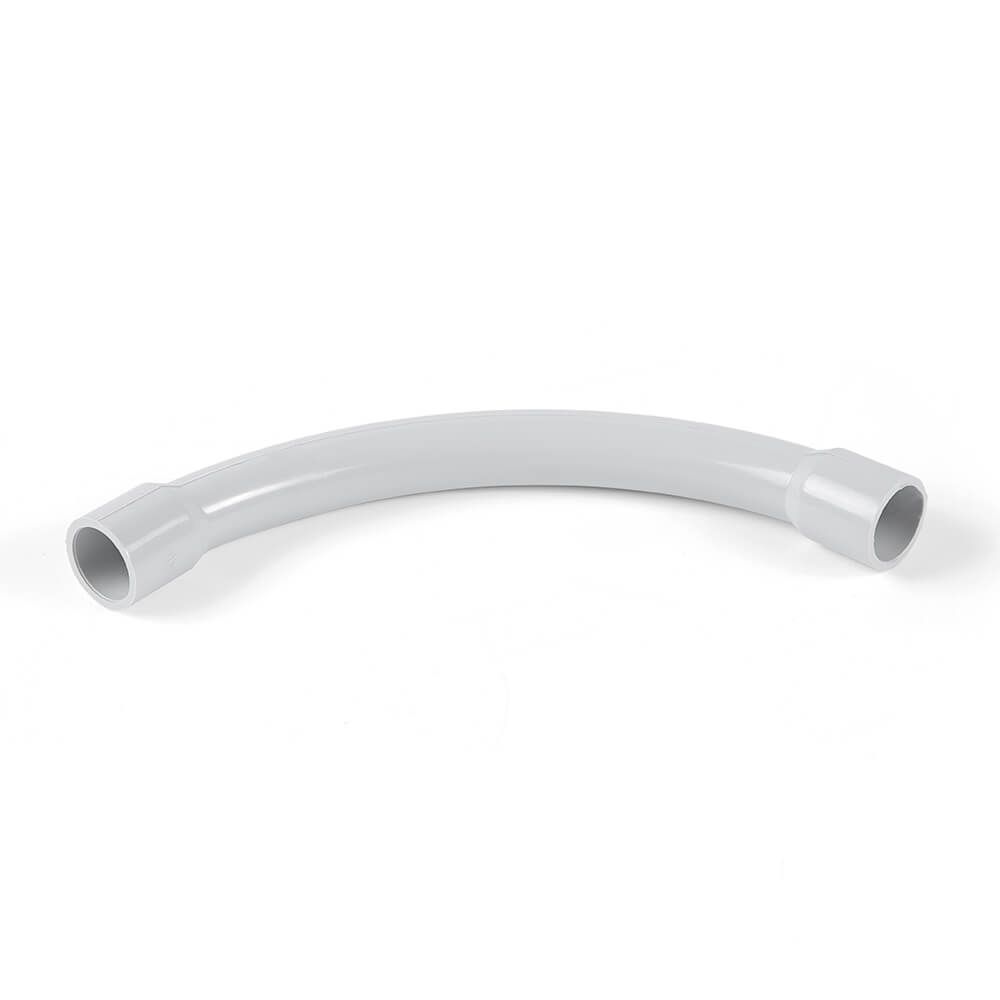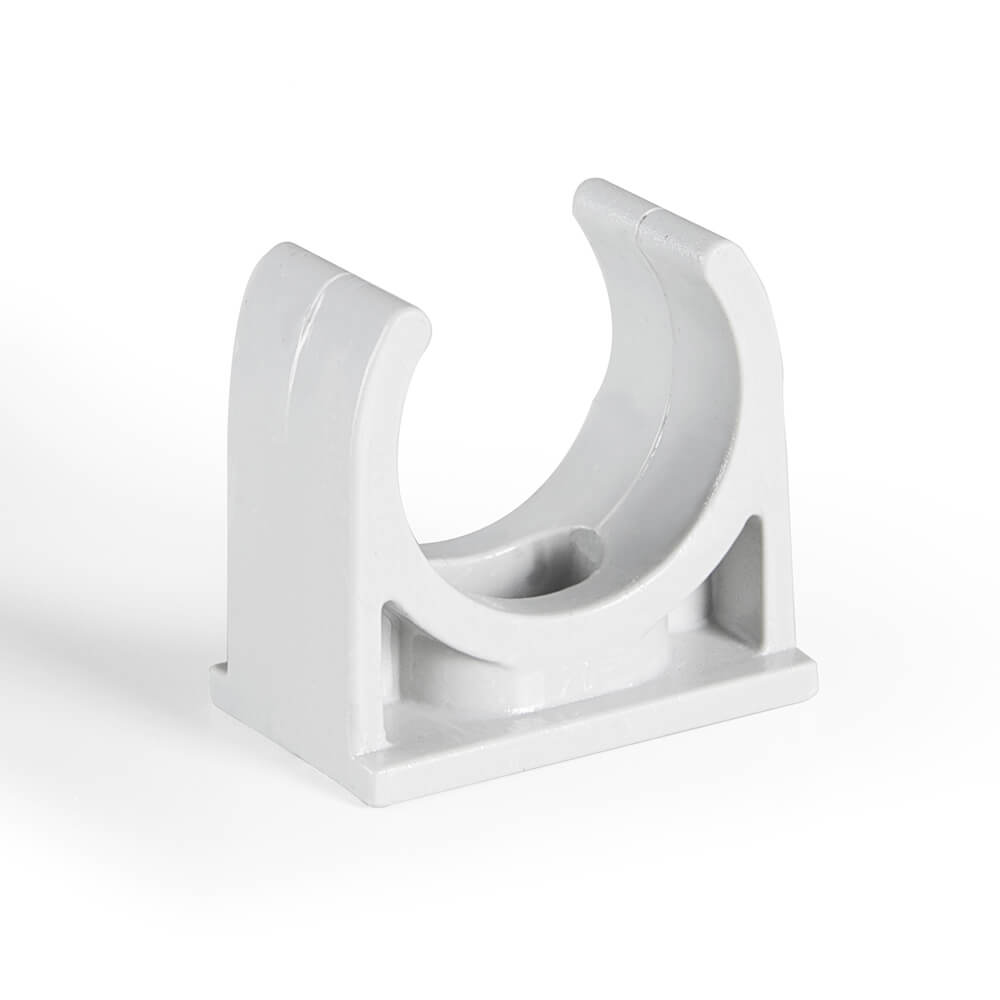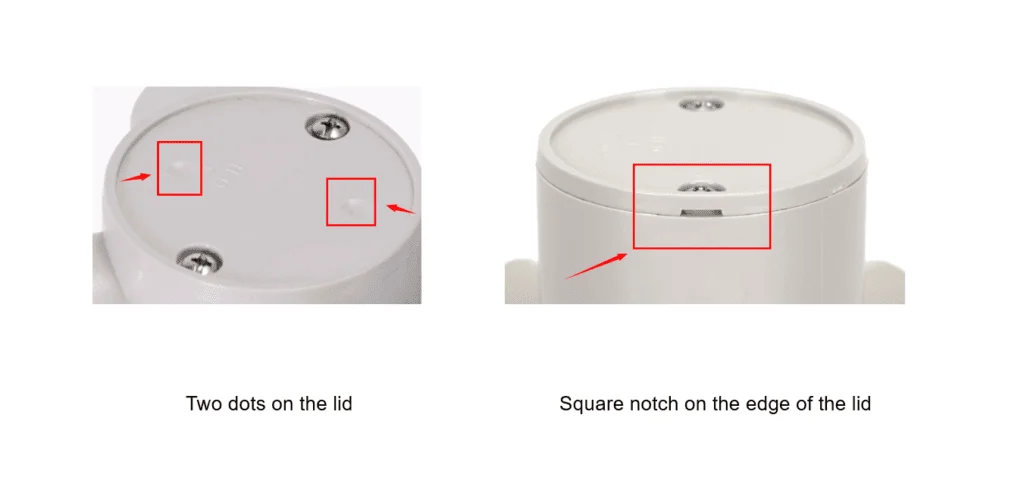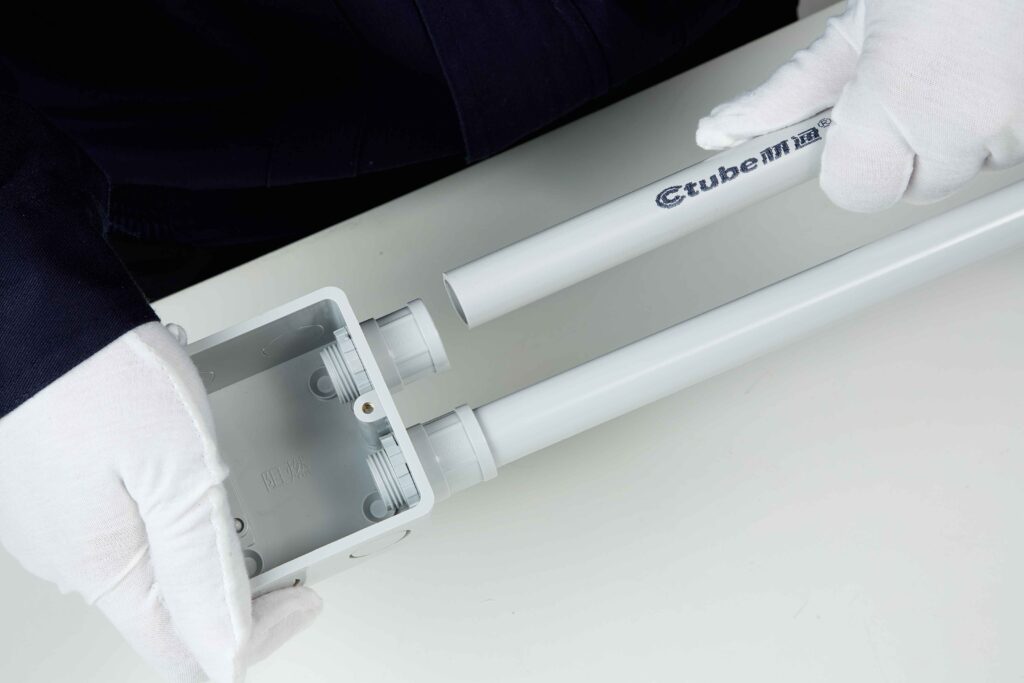6 Innovative PVC Conduit Fittings That Boost Efficiency
Electrical conduit fittings are essential components in wiring systems, providing connectivity, protection, and organization for electrical conduits. In this article, we will explore the innovation in PVC conduit fittings that enhance efficiency and streamline installations.
1. What are PVC electrical conduit fittings?
Electrical conduit fittings are specialized components used to connect, terminate, and secure electrical conduits. They ensure proper routing and protection of electrical wires and cables, safeguarding them from damage and environmental factors.
2. Why are PVC conduit accessories important?
Electrical conduit accessories play a crucial role in optimizing the functionality and reliability of wiring systems. They provide additional support, organization, and protection, enhancing the overall efficiency and safety of electrical installations.
3. How to choose PVC conduit fittings?
Selecting the right PVC conduit fittings is critical for ensuring compatibility, performance, and safety in wiring projects. Factors to consider include conduit size, application environment, and specific project requirements. It’s essential to choose fittings that meet industry standards and regulations.
4. What types of PVC conduit accessories are available?
Coupling, Junction box, adaptable box, elbow, sweep bend, conduit clip, screw adapter to corrugated conduit, straight tee for installation and etc. In the following, we introduce the first six accessories.
a. Coupling: Joins two conduit sections together in a straight line
Couplings serve as the backbone of any conduit system, facilitating the seamless connection of two conduit sections to create a continuous and reliable pathway for electrical wiring. In the realm of PVC conduit fittings, these essential components are designed with innovative features to enhance installation efficiency and long-term performance.
The key advancement in PVC couplings is the integration of snap-on designs, which revolutionize the installation process by eliminating the need for cumbersome tools. This innovative feature allows electricians to simply snap the coupling into place, significantly reducing installation time and labor costs. Moreover, snap-on couplings ensure a secure and tight fit, minimizing the risk of disconnection or movement once installed.
In addition to ease of installation, PVC couplings are often crafted from corrosion-resistant materials, such as high-grade PVC or PVC-coated steel, to withstand the rigors of harsh environments. This durability ensures that the coupling maintains its structural integrity over time, even in corrosive or corrosive-prone conditions, such as outdoor or industrial settings. As a result, PVC couplings offer long-lasting performance and reliability, minimizing the need for frequent replacements and reducing maintenance costs.
b. Junction box: Offers flexibility in conduit termination and connection points
Junction boxes represent a versatile solution in electrical conduit systems, offering flexibility in conduit termination and connection points. These boxes are designed to adapt to various installation scenarios, providing electricians with the freedom to customize conduit layouts and accommodate specific project requirements.
One of the primary advantages of junction boxes is their ability to accommodate multiple conduit termination points within a single enclosure. Unlike traditional junction boxes, which typically have fixed entry and exit points, junction boxes now feature removable knockout holes or pre-marked areas that can be easily punched out or modified to create additional entry or exit points for conduits. This flexibility allows electricians to adapt the box to suit the specific layout of the conduit system, minimizing the need for multiple boxes and streamlining the installation process.
Additionally, some junction boxes may feature expandable designs that can be extended or modified to accommodate additional wiring or devices, providing scalability and future-proofing for the electrical system. Ctube’s PVC junction boxes offer shallow and deep options with 1-way to 4-way configurations, and feature 20mm and 25mm holes.
c. Adaptable box: Provides a protective enclosure for wire splices and connections
Adaptable boxes are essential components in electrical installations, serving as protective enclosures for wire splices and connections. These boxes play a crucial role in safeguarding electrical connections from environmental hazards, mechanical damage, and tampering, ensuring the integrity and safety of the entire wiring system.
One of the key functions of adaptable boxes is to provide a secure and enclosed space for wire splices, terminations, and connections. By housing these components within a protective enclosure, junction boxes prevent exposure to moisture, dust, debris, and other external elements that could potentially compromise the integrity of the electrical connections. This protection is particularly vital in outdoor or harsh environments where exposure to the elements is a concern.
Additionally, adaptable boxes help to organize and manage the complex network of wires and cables within an electrical system. By containing and consolidating multiple wires and connections in a single enclosure, junction boxes minimize clutter and confusion, making it easier for electricians to troubleshoot and maintain the system. Moreover, organized wiring within adaptable boxes reduces the risk of accidental contact or damage, enhancing overall safety.
Innovative features found in modern adaptable boxes further enhance their functionality and usability. For example, some adaptable boxes feature removable covers or access panels, allowing for easy inspection, maintenance, and modification of electrical connections without the need for specialized tools. Others may incorporate built-in strain relief mechanisms to prevent cable damage and ensure long-term reliability.
Furthermore, adaptable boxes come in various sizes, shapes, and materials to accommodate different installation requirements and environmental conditions. Whether it’s a small adaptable box for residential applications or a rugged, weatherproof box for industrial settings, there is a wide range of options available to meet specific project needs.
d. Elbow: Facilitates changes in conduit direction at specified angles
Elbows are fundamental components in electrical conduit systems, facilitating changes in conduit direction at specified angles. These essential fittings play a critical role in routing electrical conduits around obstacles, corners, and other structural elements, ensuring optimal conduit alignment and system integrity.
One of the primary functions of elbows is to enable smooth and efficient conduit routing in confined spaces or complex layouts. By allowing conduit to change direction at specified angles, elbows help electricians navigate obstacles such as walls, beams, and other obstructions without compromising the integrity of the conduit system. This flexibility in conduit routing ensures that electrical wiring can be installed safely and efficiently in any environment, from residential buildings to industrial facilities.
In addition to facilitating changes in conduit direction, elbows also help maintain proper bend radii in the conduit system. Bend radii refer to the minimum allowable curvature radius for electrical conduits, ensuring that wires and cables within the conduit are not subjected to excessive stress or damage. Elbows with built-in radius guides or markings help electricians achieve precise bends that comply with industry standards and regulations, minimizing the risk of cable damage and ensuring long-term reliability.
Furthermore, elbows come in various angles and configurations to accommodate different installation requirements and space constraints. Common angles include 90 degrees, 45 degrees, and 30 degrees, allowing electricians to make precise turns and bends as needed. Additionally, elbows may feature swivel designs that allow for adjustable positioning, enabling electricians to fine-tune conduit alignment and optimize routing efficiency.
e. Sweep bend: Allows gradual bends for conduit routing around corners or obstacles
Sweep bends are essential components in electrical conduit systems, offering a solution for routing conduits around corners or obstacles with gradual bends. Unlike traditional elbows, which create sharp angles in conduit routing, sweep bends provide a more gradual curve, reducing the risk of cable damage and ensuring optimal conduit alignment and system integrity.
One of the primary advantages of sweep bends is their ability to facilitate smooth and gradual conduit routing, particularly in confined spaces or areas with limited clearance. By allowing conduits to bend gradually around corners or obstacles, sweep bends minimize stress and tension on the electrical cables inside, preventing kinking, stretching, or damage. This gradual bending action ensures that wires and cables can be safely and efficiently routed without compromising their performance or longevity.
Moreover, sweep bends help maintain proper bend radii in the conduit system, ensuring compliance with industry standards and regulations. Bend radii refer to the minimum allowable curvature radius for electrical conduits, and maintaining these radii is essential for preventing cable damage and ensuring optimal signal transmission. Sweep bends with pre-marked angle indicators or radius guides help electricians achieve precise bends that meet industry requirements, reducing the risk of non-compliance and ensuring the long-term reliability of the electrical system.
In addition to their functional benefits, sweep bends also offer versatility in conduit routing, allowing electricians to navigate complex installations with ease. Sweep bends come in various angles and configurations to accommodate different installation requirements and space constraints, providing flexibility and adaptability in conduit routing. Whether it’s a gentle curve around a corner or a more substantial bend to bypass an obstacle, sweep bends offer a solution for virtually any routing scenario.
f. Conduit clip: Secures conduit to surfaces for support and stability
Conduit clips are essential accessories in electrical conduit systems, designed to secure conduits to surfaces for support and stability. These clips play a critical role in ensuring that conduits remain firmly in place, preventing sagging, movement, or displacement, which could compromise the integrity and safety of the entire wiring system.
One of the primary functions of conduit clips is to provide secure attachment points for conduits on surfaces such as walls, ceilings, or floors. By securing conduits in place, conduit clips help distribute the weight of the conduit and any contained wiring evenly across the mounting surface, minimizing stress and strain on the conduit and ensuring long-term stability. This is particularly important in environments where vibration, movement, or other external forces may be present, as conduit clips help prevent damage or disconnection of the conduit.
Moreover, conduit clips offer versatility in installation, allowing electricians to securely attach conduits to a wide range of surfaces and configurations. Whether it’s a vertical wall, horizontal ceiling, or overhead beam, conduit clips come in various sizes and designs to accommodate different mounting requirements and surface materials. Some clips may feature adjustable straps or brackets to accommodate conduits of varying sizes, providing flexibility and ease of installation.
As a premier manufacturer and supplier of plastic PVC conduit pipes, we offer a diverse range of PVC electrical products, including fittings and accessories. Our commitment to meeting market demands is reflected in developing various standards tailored to specific needs. For example, we provide Australian standard conduits and fittings designed specifically for the Australian market, as well as low smoke and halogen-free conduit and fittings suitable for a broad range of global markets.
With a decade of experience in manufacturing fittings and accessories, Ctube has earned a reputation for delivering top-quality PVC electrical products. Our PVC fittings are renowned for their easy installation and exceptional properties, such as non-conductivity, high impact resistance, and tensile strength.
Moreover, our products hold industry certifications and boast resistance to various chemicals. From adaptable boxes to junction boxes, elbows & bends, couplings, and conduit straps & clips, our product lineup is meticulously crafted to meet professional standards while ensuring reliability and durability.
For trusted PVC conduits and fittings that meet industry requirements, contact us today to learn more and place your wholesale order.
6 Innovative PVC Conduit Fittings That Boost Efficiency Leer más "

